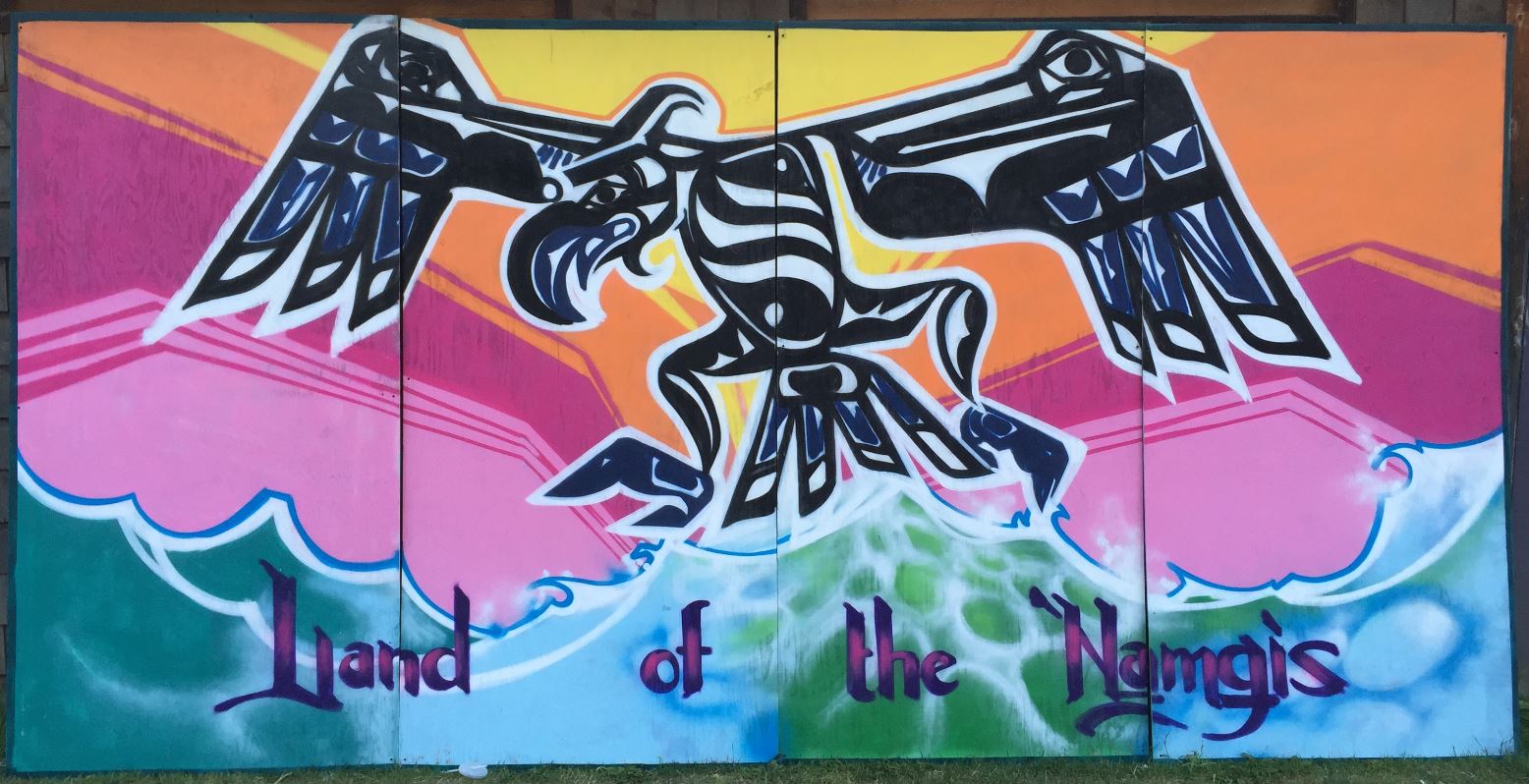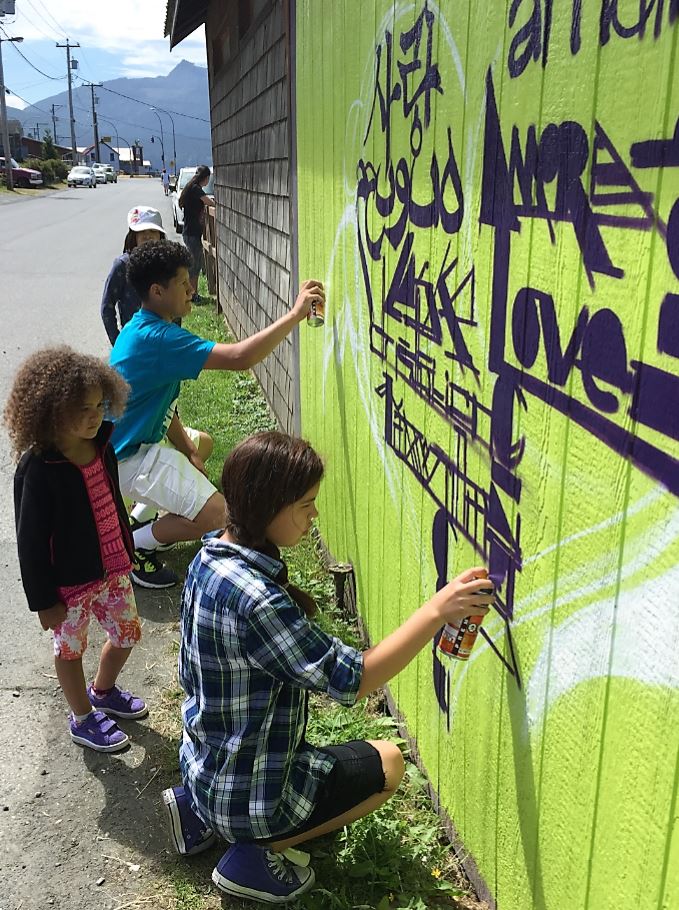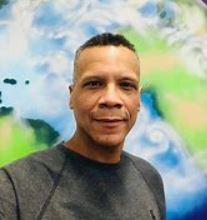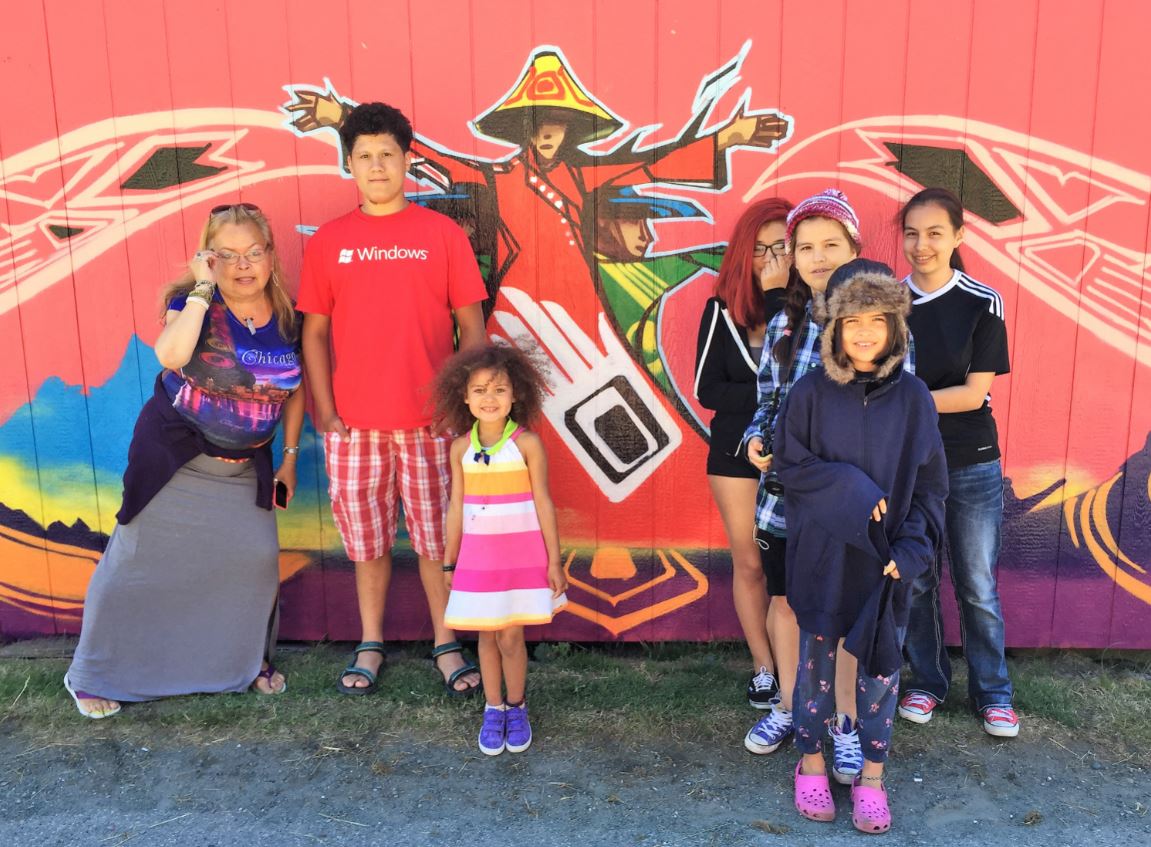FFT Fellow Researches Canada’s Attempts to Erase its Indigenous Past

The New York Times today reported that “remains of as many as 751 people, mainly Indigenous children, were discovered at the site of a former school in the province of Saskatchewan, a Canadian Indigenous group…jolting a nation grappling with generations of widespread and systematic abuse of Indigenous people.” FFT Fellow Lavie Raven (North Lawndale College Preparatory High School – Chicago) pursued this topic with his Fund for Teachers grant, researching the First Nations tribe ‘Namgis, which inhabited Northern Vancouver Island in British Columbia as early as 500 B.C. After learning about Canada’s colonization of Indigenous People, Lavie used his grant to document ‘Namgis restorative justice practices and historic folk artwork and collaborate with teens there to create hip-hop based murals, audio projects and performances that document cultural survival. His Chicago students, as well as students around the country with whom he collaborates on public art projects, continue to benefit from these experiences. Our thanks to Lavie for sharing more about his fellowship and its impact…
I teach World Studies, United States History, and Performative Policy Debate at my school. Our history department works intensely to develop interdisciplinary projects that involve another major discipline and the arts. This is reflected in much of the work I do at my school, as I also am an active hip-hop muralist and run the after-school hip-hop arts club. Through these programs I seek to provide students with opportunities to braid participatory research, social justice concerns, and the arts in creating ‘calls to action’ about issues they identify as relevant for social change.
Our social studies department makes an active effort to expose students to various cultural narratives in regards to European colonization. We prioritize indigenous North American and African narratives, as these have been historically marginalized in traditional history textbooks. We often have to collate a collection of readings from various sources to illustrate the class of cultures, and solidarity between cultures in resisting the violence of colonization. Many of these sources are incomplete or only offer a surface survey of the struggles and accomplishments of indigenous communities. And hardly any have a contemporary component, comparing communities’ histories and their methods of cultural survival.
I was fortunate to meet members of the ‘Namgis community several years ago, and found out about their intensive work on restorative justice in regards to demanding truth and reconciliation from the Canadian government and, in particular, in helping elders and adults heal from the wounds suffered in residential schools. I am actively involved in three organizations at my school: the Peace Warriors, the Performative Debate team, and the University of Hip-Hop (the last two of which I sponsor/coach). Students in our classes, and particularly in these organizations have often paralleled the struggles of African-American communities with those of indigenous peoples, and our students self-identify with those struggles, from the past into the present-day.
 I designed my Fund for Teachers fellowship to visit the indigenous ‘Namgis community of Alert Bay, a small island north to Vancouver Island, to work with community activists, traditional artists, museum curators, and ‘Namgis youth to create art work and music that represents cultural survival. Every day, I observed successful resistance to colonialism and neo-colonialism, and discovered ways the local community addressed historical violence experienced in residential schools and discrimination in Canadian society (a primary reason many whom I meet refuse to celebrate Canada Day). The interviews I conducted and my critical inquiry into injustice through hip-hop arts seeded a student pen-pal program and widened my own skills in presenting examples and models of testimonial evidence for argumentation to our debate team. In addition, I:
I designed my Fund for Teachers fellowship to visit the indigenous ‘Namgis community of Alert Bay, a small island north to Vancouver Island, to work with community activists, traditional artists, museum curators, and ‘Namgis youth to create art work and music that represents cultural survival. Every day, I observed successful resistance to colonialism and neo-colonialism, and discovered ways the local community addressed historical violence experienced in residential schools and discrimination in Canadian society (a primary reason many whom I meet refuse to celebrate Canada Day). The interviews I conducted and my critical inquiry into injustice through hip-hop arts seeded a student pen-pal program and widened my own skills in presenting examples and models of testimonial evidence for argumentation to our debate team. In addition, I:
- Met elders and artists in the community who arranged the hip-hop artwork and music schedule for me to have to engage ‘Namgis youth
- Painted mini-murals with ‘Namgis youth
- Observed the work of Culture Shock, the local cultural community space and store, and the Umista Cultural Society
- Studied the work accomplished by the Wi’la’mola Accord to create programs and activities that nurture cultural preservation.
I accumulated massive awesomeness…SEVEN murals painted with teens and elementary school kids, beautiful interviews and pictures with women making potlatch blankets for their families, an great interview with Barb Cranmer who just finished editing her film about the residential school here, a personal escort and tour through the Umista Cultural Center, a lunch session tomorrow with Connie Watts who designed the thunderbird at Vancouver airport, rapping cypher with youth in front of one of the murals we painted, intersections with two arts collectives doing hip-hop work, and a bunch more fun.
Personally, this fellowship bridged a huge gap in my own and my students’ knowledge of a powerfully resonant cultural society. I have tied the work of the ‘Namgis community center, museum and school to the work our students do with local centers and cultural institutions. I look forward to the new ideas our debate team, school artists and restorative justice clubs can enact while bearing witness to the survival and reconciliation practices of another community.
[minti_divider style=”3″ icon=”” margin=”20px 0px 20px 0px”]
 The summer after his fellowship, Lavie continued his research with a Fulbright US Distinguished Award in Teaching to study the integration of Māori folkloric arts in New Zealand. As a mural artist he has worked with youth to create culturally conscious murals that have been displayed at museums, cultural centers, and community organizations. Raven believes in providing youth with a multi-disciplinary approach toward life that holistically engages their academic skills, celebrates their talents and artistic abilities, and empowers youth desires to bring positive change to society. Lavie also represented Fund for Teachers as a keynote speaker at the 2017 Extra Yard for Teachers Summit event hosted by the College Football Playoff Association.
The summer after his fellowship, Lavie continued his research with a Fulbright US Distinguished Award in Teaching to study the integration of Māori folkloric arts in New Zealand. As a mural artist he has worked with youth to create culturally conscious murals that have been displayed at museums, cultural centers, and community organizations. Raven believes in providing youth with a multi-disciplinary approach toward life that holistically engages their academic skills, celebrates their talents and artistic abilities, and empowers youth desires to bring positive change to society. Lavie also represented Fund for Teachers as a keynote speaker at the 2017 Extra Yard for Teachers Summit event hosted by the College Football Playoff Association.
 Back to Blogs
Back to Blogs